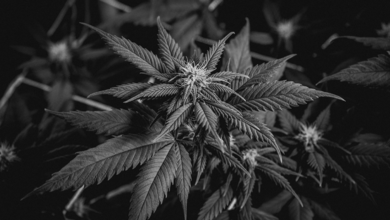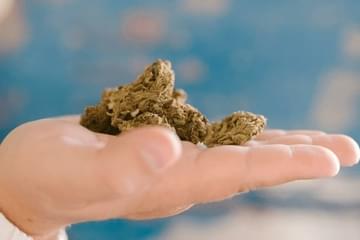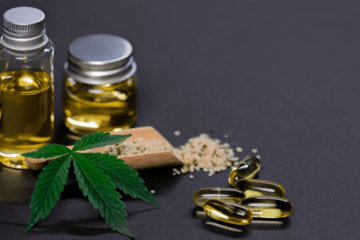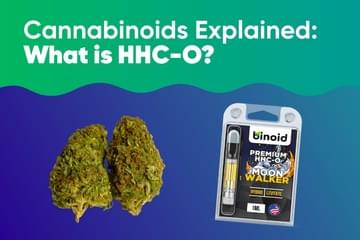
What Does Anandamide Have to do With THC?
Published on 10/9/21
Research into the nature of cannabis is slowly picking up speed after years of governmental restrictions and prohibitive red tape. Over 100 cannabinoids have now been identified in weed (tetrahydrocannabinol (THC) and cannabidiol (CBD) are the most prevalent), and the scientific community is gradually beginning to develop a better understanding of some of the traits that each particular cannabinoid presents.
What are Cannabinoids?
Cannabinoids are naturally produced chemical agents that exist in endogenous and exogenous capacities. The term "endocannabinoid" is used to refer to the endogenous cannabinoids that are naturally produced within the human body. Exogenous cannabinoids are produced externally and are what cannabis researchers are studying when they examine cannabinoids in marijuana. Cannabinoids, both endo and exo, are already present or introduced to the body from external sources operate within the endocannabinoid system to maintain homeostasis.
What is the Endocannabinoid System?
 Unsplash
UnsplashThe endocannabinoid system (ECS) is the system that allows the body to self-regulate. It is comprised of receptors in the central and peripheral nervous systems that bind with cannabinoids to establish and perpetuate homeostasis, or a composed and balanced state. The key receptors involved are known as CB1 and CB2. CB1 and CB2 assist with the regulation of important bodily functions like appetite, acknowledgment of and reaction to pain, immune system programming, emotions and more. How we eat, relax, sleep, remember and forget are all impacted by the ECS. When cannabinoids link with the receptors, neurons are activated that alter how the body and mind operate and depending on the cannabinoid and the amount in the system, those bodily functions are affected.
When THC enters the body, it prompts a psychoactive experience by binding to CB1 receptors and subsequently affects things like thought processing, appetite, memory, stress management, and pain acknowledgment.
Anandamide and the Body
One of the most common endogenous cannabinoids is anandamide. It was discovered in Israel in 1992 by a Czech chemist (Lumir Hanus) and an American pharmacologist (William Devane) who were part of the dream team of cannabis researchers established at The Hebrew University of Jerusalem by chemist Raphael Mechoulam. Mechoulam is revered for being the first scientist to isolate THC in marijuana.
Anandamide function focuses on the brain's thought processing, movement control and memory. Sound familiar? That's right. It can produce several behavioral reactions that are similar to those produced when THC enters the system. Like THC, anandamide engages with the body by binding to those same CB1 receptors. For this reason, the endocannabinoid is often called the "feel good" or "bliss" molecule. It will not provide a psychoactive experience, though. There is no real "anandamide high." This is because there is an enzyme known as FAAH (Fatty Acid Amide Hydrolase) that rapidly breaks down anandamide when it presents in large amounts. THC, on the other hand, is more difficult to break down and remains in the body for a much longer period.
Anandamide and THC
 Unsplash
UnsplashAnandamide also mimics THC in how it influences our overall mood. Low levels of anandamide have been shown to increase the likelihood of depression and increased anxiety. Another similarity between THC and anandamide is the way they both inhibit the release of the neurotransmitter glutamate. People who suffer from the agony of chronic pain tend to have high levels of glutamate.
Another realm where THC and anandamide overlap is in the brain reward process. Necessities and rewards drive how humans operate and our brains are motivated by pleasurable feelings. Dopamine is a well-known player in this process, but anandamide and THC also drive our brain to seek to understand the value of a reward and act in order to achieve it. Munchies, anyone? The release of endogenous cannabinoids like anandamide is involved in the brain reward processes because of the activation of CB1 receptors and the role they play in signaling natural rewarding events.
How to Increase Anandamide Production
If you are wondering how to increase your body's anandamide production, the easiest way is through your diet. There are several anandamide foods that are common, readily available, will taste great and improve your mood! As noted above, FAAH breaks down anandamide. Foods that contain inhibitors that prevent FAAH from doing just that are key to maintaining and boosting anandamide levels in the body.
Kaempferol is a powerful FAAH inhibitor that allows anandamide to do its important work. It is found in everyday foods like apples and blackberries. It is also found in galangal, a root that is heavily used in Thai cuisine. Another common FAAH inhibitor is ethylenediamine. Chocolate is filled with ethylenediamine, perhaps that is why it is such a popular treat around the world. Adding an anandamide supplement to your diet is another option for maintaining adequate levels of the endogenous cannabinoid. There are several options available online; look for products with all-organic ingredients and minimal processing.


















